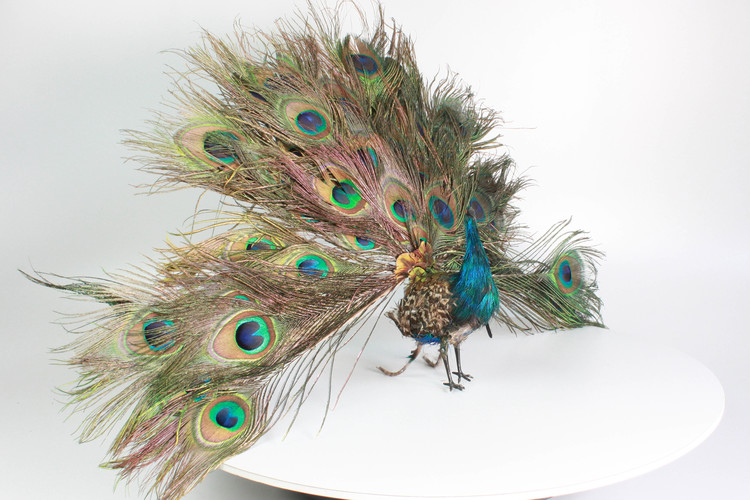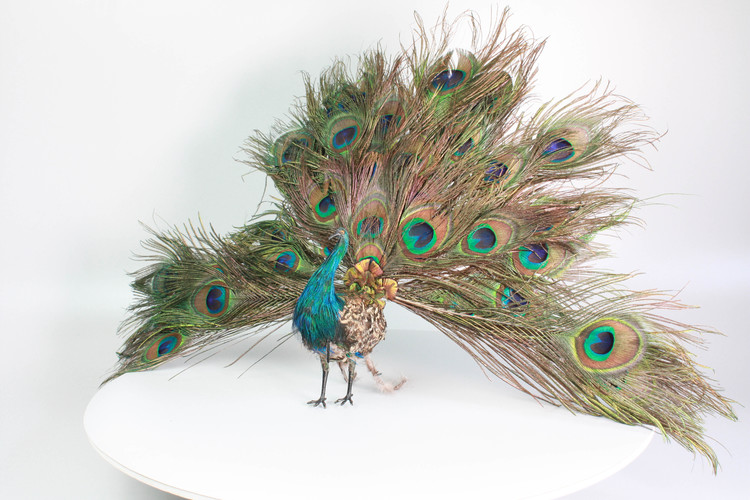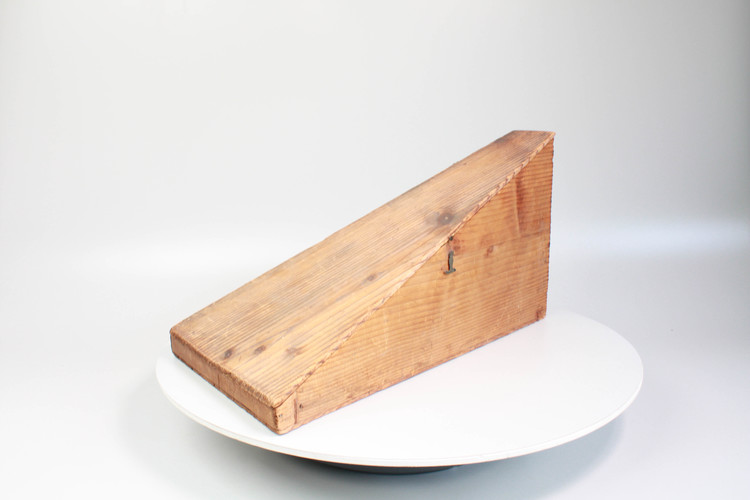
A very rare antique walking and fantail-displaying Indian peacock automaton, by Roullet & Decamps
A very rare antique walking and fantail-displaying Indian peacock automaton, by Roullet & Decamps,
French
circa 1890
An exotic trip to South Asia via France in perfect miniature...
When wound and the start/stop lever actuated, the male Indian Pavo Cristatus Peacock walks forward with pure lifelike style and purpose. He then stops and his full fan of distinctive tailfeathers rises and opens for his mating display. He holds this stance for a second or two before each feather beautifully gathers together in perfect overlap for the closedown and then lowers to the down position, whereupon he continues his walk to start all over again.
The entire action is driven by the open-spring four-pillar key-wind movement within his papier-mâché body which is completely adorned with the layered bright green, blue and black-tinged peacock feathers. His head with black glass eyes and the distinctive feathered stalks, crown his head. He has a naturalistic beak and has painted cast metal legs and feet.
The start/stop lever is found just under his breast while the winding spindle is to the side of his body.
This amazing and mesmerising automaton, which is also extremely rare, is offered in original and fully operating condition.
size - feet to head 8.1/2in., height of fantail in up position 16in., length when fantail in down position 21in. - (21.5 x 40.5 x 53.5cm)
Point of interest -
Out of the many different animals R&D made, the peacock is viewed by museums and private collectors as being one of the most desirable. For reasons mainly pertaining to the incredibly naturalistic action in the walking, the appearance obviously and the surprise of seeing the full fantail rising up and opening out just as the real bird does.
Seeing is not all believing - you will be totally captivated by his performance and be in a rare position to enjoy, just as audiences of the late 19th century, at witnessing a glimpse of real life manifested by clockwork, papier-mâché and feathers.
For further reading, see Automata - The Golden Age 1848-1914, C. Bailly, p.285.
His appearance at Douglas Fisher is not likely to be a long affair - please make his acquaintance at our gallery before he walks away...
| STOCK No | 1695 |
| AVAILABILITY | Sold |
| PRICE | Sold |




























